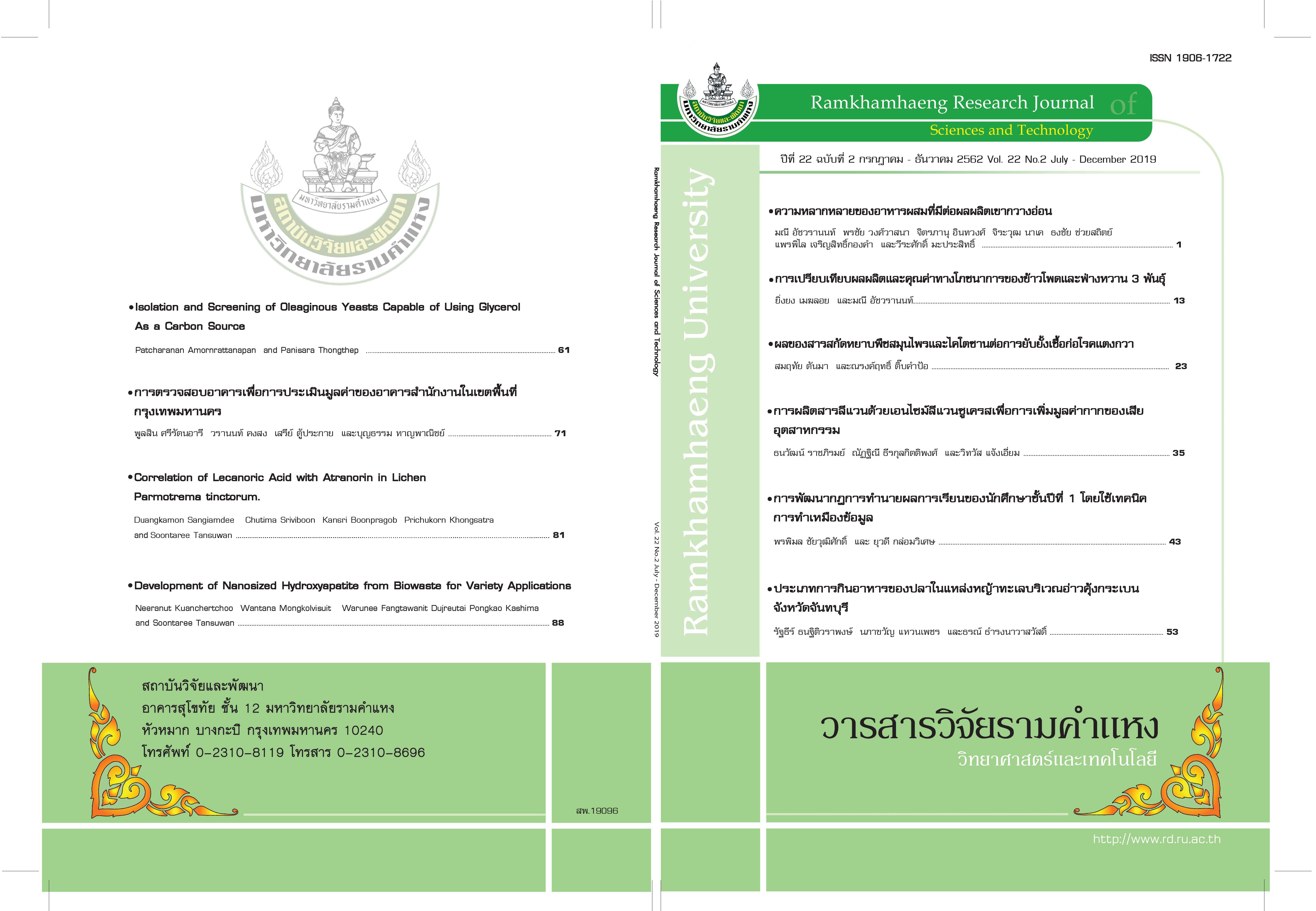Development of Rules for Predicting Academic Learning Outcomes of Freshmen Students using Data Mining Techniques
Main Article Content
Abstract
In this research investigation, the researchers apply the knowledge of data mining to analyze the academic learning outcomes of the students in various courses in the first year study plan of the Department of Statistics, Faculty of Science, King Mongkut’s Institute of Technology Ladkrabang. The researchers also establish the relationship rules between the learning outcomes of the courses taken with a grade point average (GPA) lower than 2.00 using the association rules with a priori algorithm and the decision rules for data classification with the technique of J48. The results could be used to make a plan for the study of the students. The study found that the rules used for the classification of the learning outcomes of the students under study with a GPA lower than 2.00 and those with a GPA higher than 2.00 using the J48 technique yielded the accuracy of 91 percent. The number of the association rules of the courses that affected a GPA lower than 2.00 of the students under study was 5 with the reliability at 1.00 and Lift>1.00.
Article Details
Ramkhamhaeng University
References
ทิพย์ธิดา วงศ์พิพันธ์. 2556. การใช้เหมืองข้อมูลช่วยในการตัดสินใจการให้สินเชื่อ. งานค้นคว้าอิสระ สาขาวิชาเทคโนโลยีคอมพิวเตอร์และการสื่อสาร คณะวิศวกรรมศาสตร์ กรุงเทพ. มหาวิทยาลัยธุรกิจบัณฑิตย์.
บุษราภรณ์ มหัทธนชัย, ครรชิต มาลัยวงศ์, เสมอแข สมหอมและณัฐิยา ตันตรานนท์. 2559. กฎความสัมพันธ์ของรายวิชาที่มีผลต่อการพ้นสภาพนักศึกษาโดยใช้อัลกอริทึมอพริโอริ [Online].1:456-469.http://www.cmruir.cmru.
ac.th/bitstream/123456789/448/1/Dropout_Mining.pdf.
สายชล สินสมบรูณ์ทอง.2558. การทำเหมืองข้อมูล. กรุงเทพฯ: จามจุรีโปรดักท์.
ศุภามณ จันทร์สกุล. 2561. เทคนิคเหมืองข้อมูลในการวิเคราะห์ข้อมูลทางการพยาบาล. วารสารวิชาการมหาวิทยาลัยอีสเทิร์นเอเชีย ฉบับวิทยาศาสตร์และเทคโนโลยี. 12(2):83-96.
Agrawal, R., Imielinski, T. and Swami, A. 1993. Mining Association Rules between Sets of Items in Large Databases. Proceedings of the 1993 ACM SIGMOD International Conference on Management of Data, Washington DC, May 1993, 207-216.
Quinlan, J. R. 1993. C4.5: Programs for Machine Learning. Morgan Kaufmann Publishers.
Shearer, C. 2000. The CRISP-DM model: The new blueprint for data mining. Journal of Data Warehousing, 5(4), 13–22.


